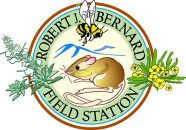Gleichmann, Nicole (2010)
The Effects of Invasive Plant Litter on the Germination of Native Grasses in a California Grassland.
Bachelor of Arts, Scripps College, Organismal Biology.
Advisor: Diane Thomson.
Human movement has caused the translocation of species from one location to another, both accidentally and intentionally; sometimes an introduced species will end up undergoing rapid population growth and spreading, leading to biological invasions. These invasions are one of the main threats to biodiversity around the globe. In regards to reestablishing native species, more studies need to be conducted to determine the specific attributes that make invasive species successful in these habitats. The introduction and establishment or exotic annual species from the Mediterranean region in the perennial grasslands of California have led to one of the most dramatic invasions worldwide. In these grasslands of California have led to one of the most dramatic invasions worldwide. In these grasslands, invasive species often leave dense litter layers, and litter can potentially influence native species through chemical effects such as the release of allelopathic compounds, or physical ones such as shading and alteration of soil hydrology. I investigated the physical and chemical effects of litter from these exotic grasses on the germination and survival of several native annuals, including Amsinckia menziesii var. intermedia, Phacelia distans and Camissonia bistorta. Both field and container experiments were used to determine how invasive grass plant litter affected the germination of a number of the more common native annuals. There were four treatments assigned randomly to blocks in the field: control, litter removal, chopped litter, or straw/mulch. The control treatment created a growing site with both physical and chemical effects of the litter present, the litter removal treatment created one with neither, the treatment created one with physical effects only. Similar four treatments were assigned for germinating seeds in containers in a germinator. For the germination of both the invasive and native species, there was no evidence of a chemical effect in the field of in the lab. However, I found negative chemical effects of litter on Amsinckia survivorship in the field. Chemical litter had positive effect on the germination and survival of invasive Bromus species. This effect may have been due to an increased invasive grass seed supply in the chemical treatments, which may also have increased competition stress on Amsinckia, explaining its decreased survivorship. In the field, the physical presence of litter facilitated germination of Amsinckia and Bromus, but had no effect on the germination of another annual, Erodium cicutarium. In contrast, negative physical effects of litter were found on Phacelia establishment in the lab. Physical litter facilitated Bromus survivorship while inhibiting Amsinckia survivorship in the field. Invasive plant litter had complex effects on native species, with some stages of their life cycle negatively influenced while others positively; the responses also differed between native species. This diversity of responses may complicated the problem of finding effective conservation methods, and suggests that further research is needed in this area to determine the full range of litter effects in these habitats.
